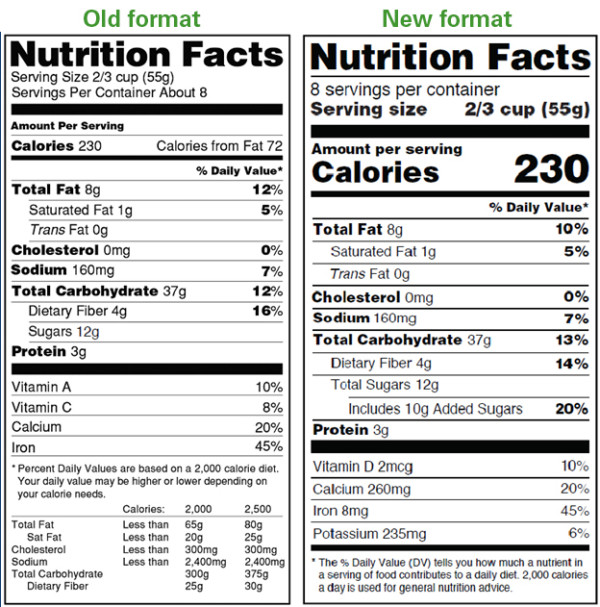Children's Emergency Department is now located in Children's Tower: 1001 E. Marshall Street.
Learn more
The Nutrition Facts panel is getting a new look! Many consumers find that they are able to use the information on this panel to make informed decisions about food. By July 2018, most food manufacturers will be required to follow new FDA labeling standards, which are intended to give consumers more relevant nutrition information in an easy-to-understand panel format. The labels may be popping up on grocery store shelves ahead of schedule, so here’s an advance look at what you can expect to see at a store near you, and how you can use this information!

The following pieces of information will be in bigger and/or bolder print:
All nutrition information on the Nutrition Facts panel is based on a particular serving size. It was very common to have people make a mistake of thinking that the Nutrition Facts panel contained the nutrition information for an entire package. This easier-to-read information can keep people from making this mistake.
People may think that a particular package (like a 20-ounce bottle of soda or a can of soup) contains “a single serving” but the Nutrition Facts panel would typically utilize “reference standards” as the basis for nutrition information. For example, a reference standard serving of soda has historically been 8 ounces (the amount in what people often call “the cute cans”.) A reference standard serving of prepared canned soup has historically been 1 cup (about ½ of a 15-ounce can).
The FDA is now basing serving sizes on the current amounts that people typically eat at one time, and people tend to eat bigger portions than the originally-established standards. However, this change is not meant to normalize eating larger portions of food! If you are healthy and satisfied while eating/drinking more petite portions, continue to do so and trim back all the information on the Nutrition Facts label accordingly.
Sugar has always been included on Nutrition Facts labels as a subcategory of “total carbohydrates.” Separating out another sub-category of “added sugar” can help people make choices that are the healthiest ones possible. Let’s examine this more closely by looking at milk options.
Plain low-fat milk, with no flavoring added, might contain around 13 grams of carbohydrates in 1 cup, even though it has no sugar added to it. This is because milk contains a naturally-occurring sugar (lactose). Chocolate low-fat milk typically has, in addition to the naturally-occurring lactose, a lot of sweetener added – sometimes as much as 5 teaspoons per cup! Separating out the added sugar makes it easier to compare which products have the most sweetener added, and to pick the option in a particular category that has the least added sugar (e.g., the flavored milk that has the least amount of sugar added) or even no sugar added.
Keep in mind that food manufacturers may start to add in more artificial sweeteners to products to keep the taste sweet but lower the “added sugar.” If you try to avoid these sweeteners for any reason, keep this in mind and read ingredient lists carefully.
These nutrients have always been important, but health care providers increasingly see that these nutrients are not at the ideal level for many Americans. The same is true for calcium and iron, the two other items that have mandatory labeling on the new panel.
Vitamin D is important for hormone synthesis and bone health. Many people – children, adults and seniors alike – are being diagnosed with Vitamin D deficiency because of lack of sunlight exposure and poor dietary intake. People can have a better handle on getting adequate dietary intake by aiming to get at least 100% of the recommended daily value of Vitamin D (20 mcg) through their diet.
Potassium intake is important to keep at the right levels. Many Americans are experiencing cardiac issues (or are at risk for heart disease) and can benefit from increased potassium intake. Some people, like those who are on a renal (kidney) diet, need to keep potassium limited. Having this information clearly presented will help individuals with varying health concerns stay on track with their intake.
Medical care providers are rarely seeing Vitamin C deficiency (aka scurvy) or Vitamin A deficiency these days. So while intake is important, it is not considered as crucial for this information to be tracked on the Nutrition Facts panel. Manufacturers can voluntarily keep information about Vitamin A and Vitamin C on the panel; for foods that are particularly high, fortified or enriched with these vitamins, the information will likely remain.